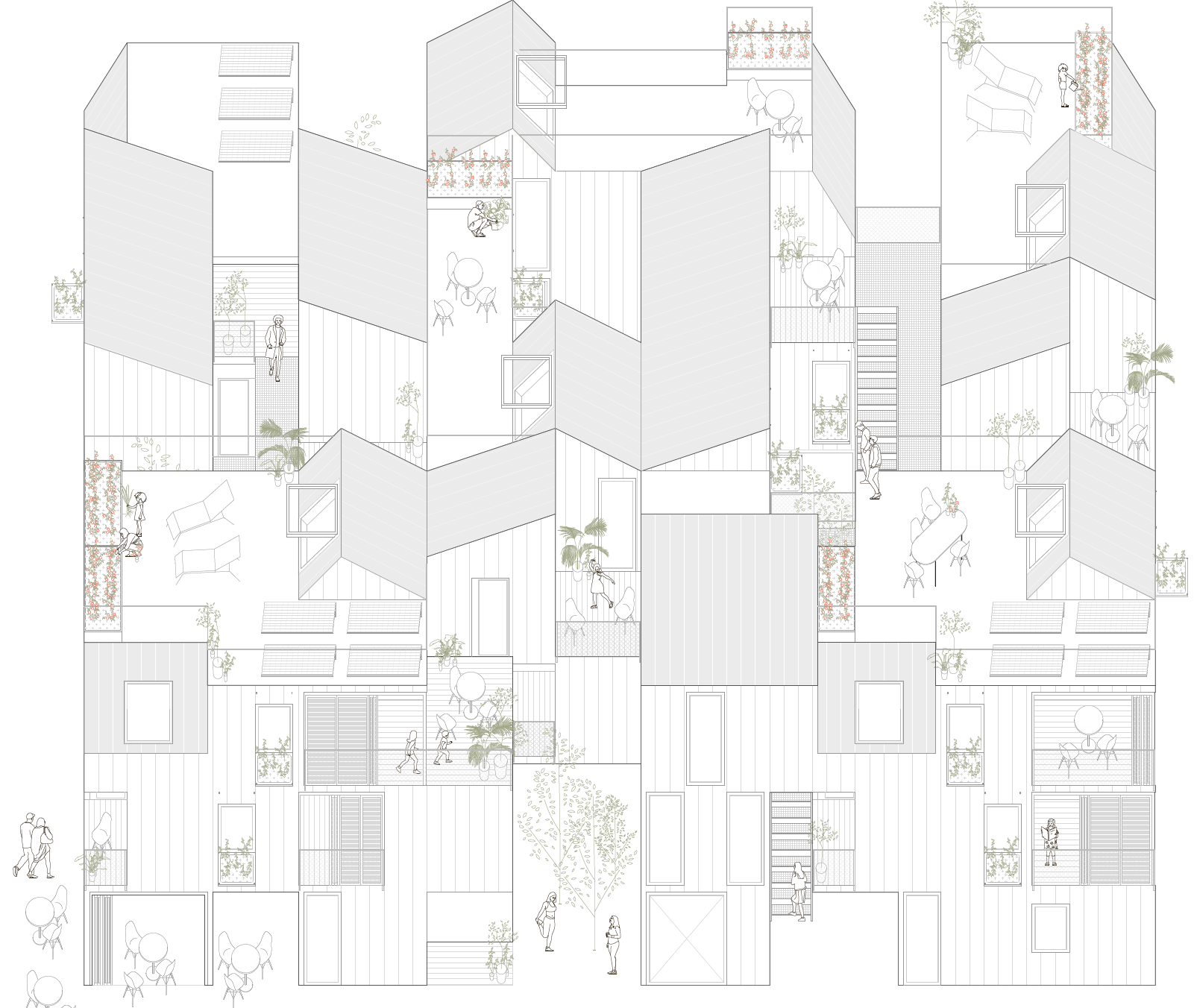

The concept of social housing in the US is evolving. Embracing compact, communal intergenerational living is pivotal, bringing numerous ecological and social benefits. This approach significantly contributes to a healthier planet while enhancing the residents’ quality of life.
Compact cohousing encompasses a myriad of advantages, including a reduced ecological footprint, efficient resource utilization, energy conservation, communal gardens, curbed urban sprawl, shared transportation, minimalist lifestyle, opportunities for learning and innovation, and mindful consumption. These aspects align with a sustainable and harmonious way of living.
Moreover, in a society where social isolation poses a growing threat, the creation of diverse and intergenerational communities becomes a necessity. The condition of loneliness, a critical issue affecting Americans, emphasizes the need for fostering collective housing communities that promote interaction and communal living.
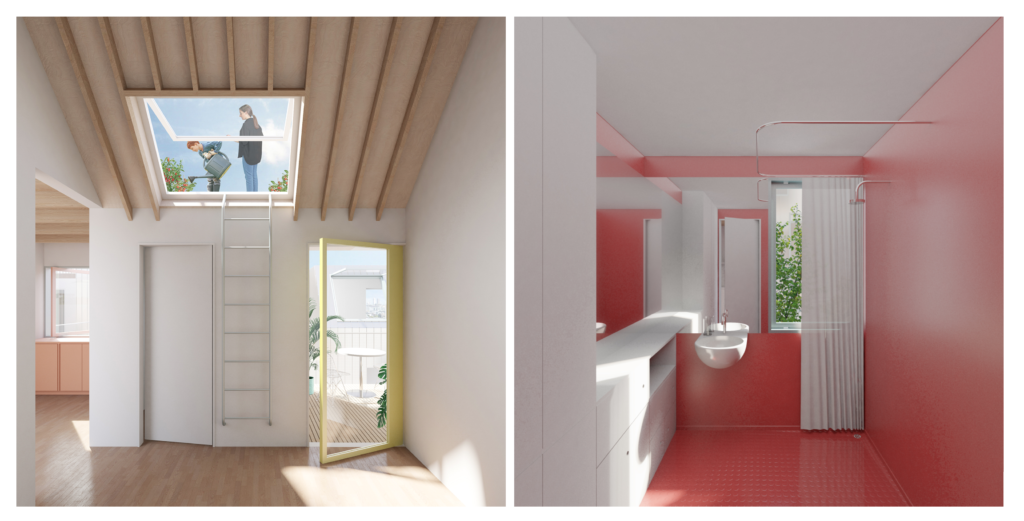
The essence of Transformable Housing Project by HABITABLE studio (San Francisco, 2020-21) lies in the need to confront the challenges of traditional concepts of apartment buildings and social housing. It advocates for small footprint living and dignity as a fundamental principle of human-centered design. The project explores multifunctionality, flexibility, and mixed-use spaces, all while considering the dignity of every individual.
Designing a collective housing building involves tackling the Paradox of the Metropolis and aligning with current urban challenges. From density and circular economy to inclusivity and ecology, the project aims to address multifaceted urban concerns through innovative design and thoughtful consideration.
In this venture, historical and contemporary architectural philosophies are revisited, drawing inspiration from pioneers like Moisei Ginzburg, Michiel Brinkman, Alison & Peter Smithson, Jaap Bakema, Kazuyo Sejima, Balakrishna Doshi, Alejandro Aravena, and Tatiana Bilbao. These influences enrich the project, allowing a deep exploration of architecture’s interrelation with societal, economic, health, cultural, political, and environmental challenges.
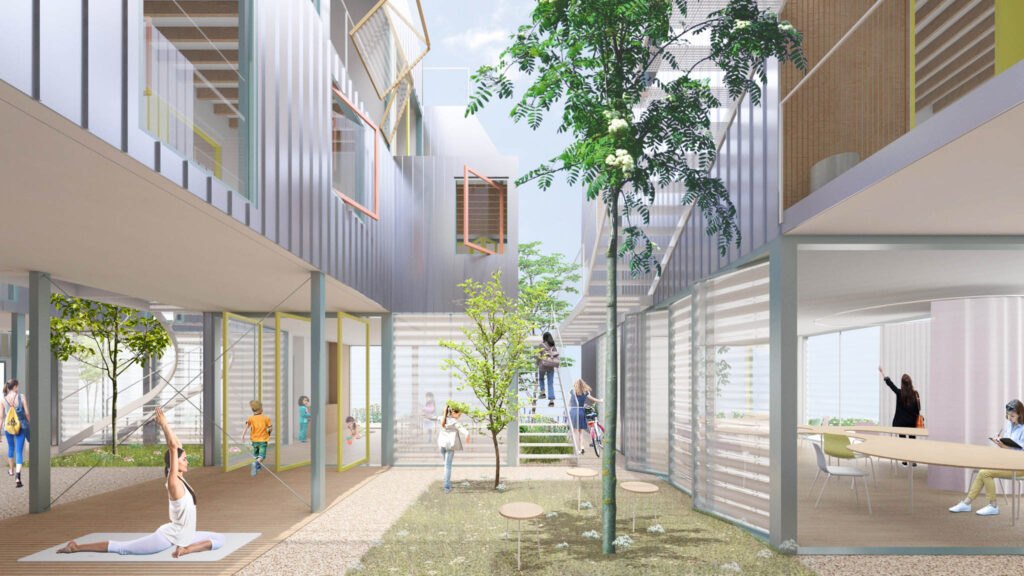
The project delves into various dimensions, including urban density, flexibility, aging-in-place, social diversity, circular economy, ecology, materiality, affordability, transformability, small-footprint living, inclusivity, and innovative typologies.
In essence, this project offers versatile, nontraditional housing units conceived to promote community living and flexible arrangements. The design accommodates diverse age groups and encourages collaborative living, introducing innovative typologies and accessible designs. The focus shifts from monolithic housing blocks to a permeable, village-like living style with a blend of housing typologies and accessible, eco-friendly designs.
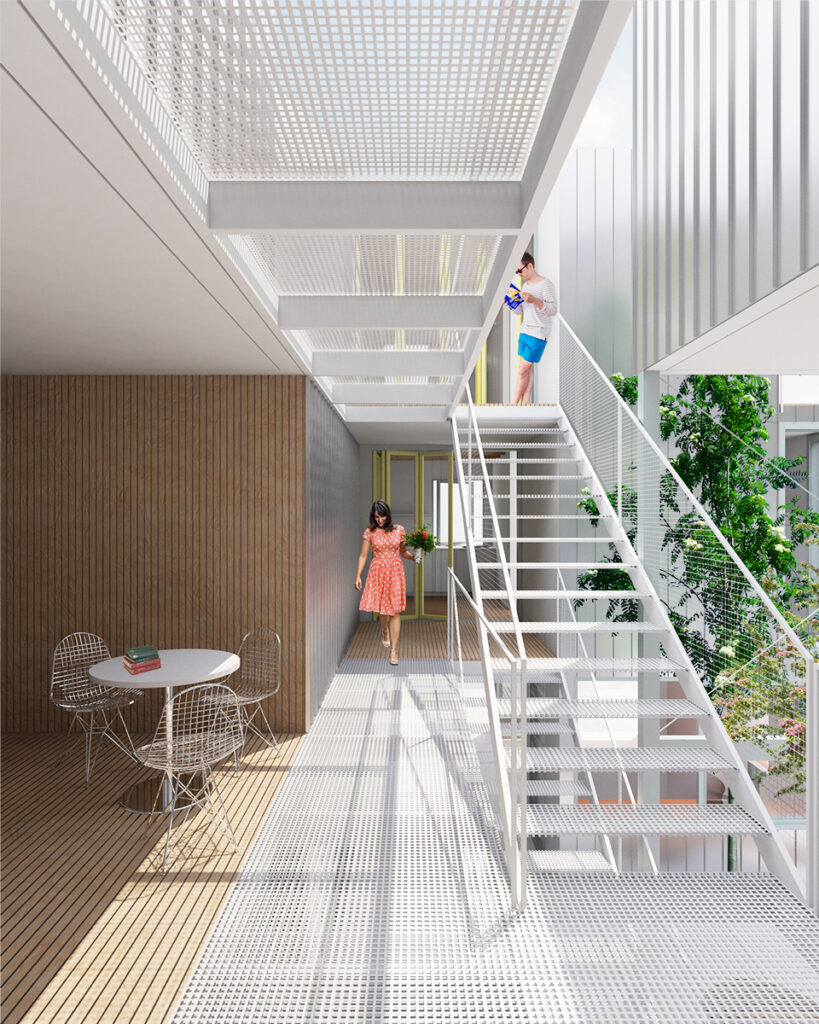
Most of the apartments feature include entrances. The presence of different access points allows for dwelling flexibility, whether it’s renting rooms, living independently from the family nucleus, or adapting to changes in the family environment. All circulation areas are exterior and constructed from lightweight materials to enhance light penetration and visual translucency, thus extending the reach of patio life.
Certain units are equipped with a terrace that can be either open or enclosed, offering versatility to the space, serving as a dining room, playroom, or relaxation area during the day, and transforming into a guest bedroom at night.
Private orchards on the habitable roofs further enhance the building’s integration with nature by extending vegetation to multiple levels. Accessible housing and community spaces, such as a daycare, a co-working area, a yoga studio, and a café, along with multiple gardens and open areas for children to play and people to enjoy, are located on the ground floor.
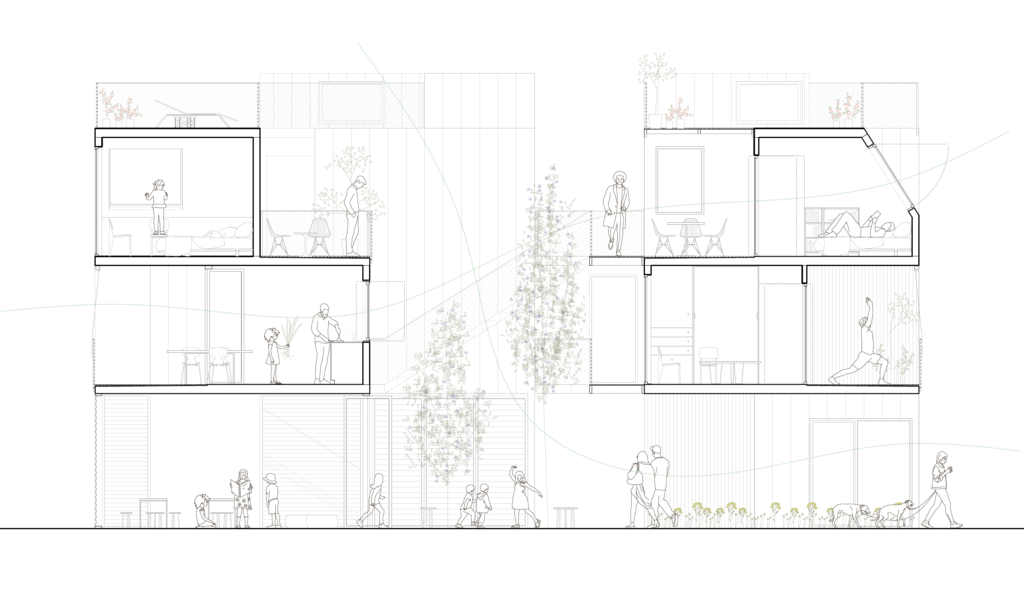
By embracing co-living concepts, this approach addresses both climate and population concerns. It offers an eco-conscious alternative that minimizes resource consumption, paving the way for a sustainable future. Additionally, well-designed communal spaces can combat the prevalent issue of loneliness, enhancing the overall well-being of individuals.
This project envisions a nurturing environment akin to a green, intimate village, where the lines between indoor and outdoor spaces blur seamlessly. The meticulous landscaping, featuring an array of fruit trees, further enriches the living experience, painting a vivid picture of harmonious coexistence within a sustainable habitat.
In the words of Tatiana Bilbao, “Humans are social creatures and need to be part of a collective. So how then, does one design to encourage it?” This project aims to answer that question by fostering a sense of community, ecology, and improved quality of life, reimagining social housing in the US.
Houston, September 15, 2023
